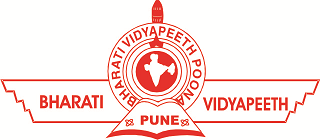Introduction
Digital communication plays a crucial role in modern telecommunication systems, enabling efficient, reliable, and high-speed data transmission. This laboratory course provides hands-on experience in key digital modulation and coding techniques, which are fundamental in wireless communication, data networks, and signal processing. The experiments in this lab focus on understanding various digital modulation schemes, line coding techniques, and signal processing algorithms using both hardware implementations and MATLAB simulations.
 Objective of the Laboratory
Objective of the Laboratory
The objective of the laboratory is
- To understand the various basic concepts of digital communication and various PCM modulation.
- To understand the various digital Modulation-demodulation techniques.
- To understand various coding in digital communications.
- To understand importance of information theory in digital communication
Facilities
- Software – MATLAB 2022B
- Hardware
| Sr no | Equipment Name | Specification | Quantity |
| 1 | SAMPLING AND RECONSTRUCTION | MODEL 2151 | 05 |
| 2 | TDM PULSE CODE MODULATION | MODEL 2153
|
07 |
| 3 | TDM PULSE CODE DEMODULATION | MODEL 2154 | 07 |
| 4 | DATA FORMATTING AND CARRIER MODULATION | MODEL 2156 | 05 |
| 5 | DATA FORMATTING AND CARRIER DEMODULATION | MODEL 2157 | 05 |
| 6 | DELTA ADAPTIVE AND DELTA SIGNAL | MODEL 2155 | 02 |
| 7 | DIFFERENTIAL PULSE CODE MODULATION | MODEL 2113 | 05 |
| 8 | QAM TRAINING SYSTEM | MODEL 2136 | 05 |
| 9 | PCM MODU TRANSMITTER
|
MODEL 2153 | 03 |
| 10 | PAM/PPM/PWM/Trainer | MODEL 2110 | 03 |
| 11 | Digital Oscilloscope | TBS 1052 C50MHZ Dual CHANNEL Oscilloscope | 05 |
| 12 | Computer | Intel Core (i7) 8th Generation 3.20GHz RAM-8GB | 01 |
| 13 | Computer | Intel Core (i5) 4th Generation 2.90GHz ,RAM-16GB | 17 |
| 14 | Printer | HP Laser Jet Pro P1108 Plus | 01 |
Staff
- Lab Incharge: Dr.. Priyanka Gupta
- Other Faculty Members: Mr. Jatin Gaur
- Lab Assistent: Mr. Rajesh Shukla

